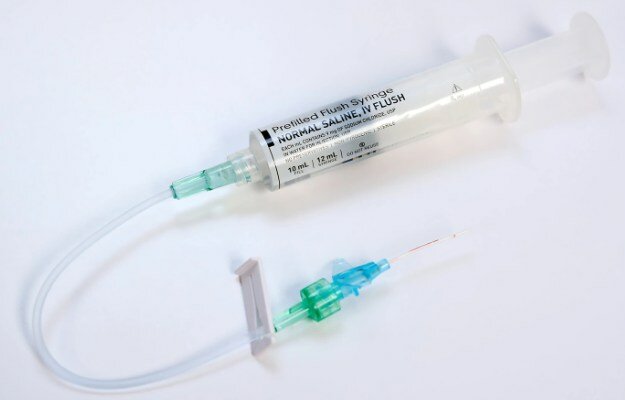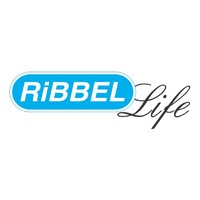Biologic-Based Materials Aid Reconstructive Surgery
|
By HospiMedica International staff writers Posted on 29 Apr 2019 |

Image: The Restella reconstructive bioscaffold (Photo courtesy of TELA Bio).
Novel reconstructive materials support soft tissues in plastic and reconstructive surgery patients requiring repair or reinforcement.
The TELA Bio (Malvern, PA, USA) Restella reconstructive bioscaffolds are based on a polymer interwoven through layers of biologic tissue in a patented "lockstitch" pattern, which creates a unique embroidered construction with controlled stretch that is highly permeable. The bioscaffolds can support a variety of surgical techniques and procedures, with an emphasis on ventral hernia repair and abdominal wall reconstruction. Restella is available in a range of sizes--up to 25×40 cm (1,000 cm2)--thicknesses, and degrees of reinforcement, and can be trimmed to size.
The sterile polymer is embedded in a biologic extracellular matrix (ECM) derived from ovine (sheep) rumen, which has been optimized in order to reduce foreign body response, minimize inflammation, and enable functional tissue remodeling through hundreds of pores that allow fluid transfer through the scaffold, with no evidence remaining of interlayer seroma after a short period of just four weeks. The interwoven polymer also helps provide tissue support, along with improved handling and load-sharing capability.
“Our success in applying the advantages of our technology platform to develop Restella reconstructive bioscaffolds is another example of TELA Bio's unique ability to bring innovation and cost savings to address a wide range of needs in surgery,” said Antony Koblish, president and CEO of TELA Bio. “These products were purposefully engineered to allow for rapid tissue integration and revascularization and biomechanical control.”
Ruminant animals such as sheep, cattle, goats, deer, and llamas have a four-chambered stomach, which include the reticulum, rumen, omasum, and abomasum. Structures in each chamber are unique, with the reticulum sporting a honeycomb pattern, the rumen characterized with thousands of papillae that increase surface area, and the omasum and abomasum with numerous folds of tissue. The rumen itself serves as a large fermentation vat in which microorganisms break down feed the animal cannot. As part of this process, they produce by-products, such as volatile fatty acids (VFAs), which the animal absorbs and uses as energy.
Related Links:
TELA Bio
The TELA Bio (Malvern, PA, USA) Restella reconstructive bioscaffolds are based on a polymer interwoven through layers of biologic tissue in a patented "lockstitch" pattern, which creates a unique embroidered construction with controlled stretch that is highly permeable. The bioscaffolds can support a variety of surgical techniques and procedures, with an emphasis on ventral hernia repair and abdominal wall reconstruction. Restella is available in a range of sizes--up to 25×40 cm (1,000 cm2)--thicknesses, and degrees of reinforcement, and can be trimmed to size.
The sterile polymer is embedded in a biologic extracellular matrix (ECM) derived from ovine (sheep) rumen, which has been optimized in order to reduce foreign body response, minimize inflammation, and enable functional tissue remodeling through hundreds of pores that allow fluid transfer through the scaffold, with no evidence remaining of interlayer seroma after a short period of just four weeks. The interwoven polymer also helps provide tissue support, along with improved handling and load-sharing capability.
“Our success in applying the advantages of our technology platform to develop Restella reconstructive bioscaffolds is another example of TELA Bio's unique ability to bring innovation and cost savings to address a wide range of needs in surgery,” said Antony Koblish, president and CEO of TELA Bio. “These products were purposefully engineered to allow for rapid tissue integration and revascularization and biomechanical control.”
Ruminant animals such as sheep, cattle, goats, deer, and llamas have a four-chambered stomach, which include the reticulum, rumen, omasum, and abomasum. Structures in each chamber are unique, with the reticulum sporting a honeycomb pattern, the rumen characterized with thousands of papillae that increase surface area, and the omasum and abomasum with numerous folds of tissue. The rumen itself serves as a large fermentation vat in which microorganisms break down feed the animal cannot. As part of this process, they produce by-products, such as volatile fatty acids (VFAs), which the animal absorbs and uses as energy.
Related Links:
TELA Bio
Latest Surgical Techniques News
- Robotic Assistant Delivers Ultra-Precision Injections with Rapid Setup Times
- Minimally Invasive Endoscopic Surgery Improves Severe Stroke Outcomes
- Novel Glue Prevents Complications After Breast Cancer Surgery
- Breakthrough Brain Implant Enables Safer and More Precise Drug Delivery
- Bioadhesive Sponge Stops Uncontrolled Internal Bleeding During Surgery
- Revolutionary Nano Bone Material to Accelerate Surgery and Healing
- Superior Orthopedic Implants Combat Infections and Quicken Healing After Surgery
- Laser-Based Technique Eliminates Pancreatic Tumors While Protecting Healthy Tissue
- Surgical Treatment of Severe Carotid Artery Stenosis Benefits Blood-Brain Barrier
- Revolutionary Reusable Duodenoscope Introduces 68-Minute Sterilization
- World's First Transcatheter Smart Implant Monitors and Treats Congestion in Heart Failure
- Hybrid Endoscope Marks Breakthrough in Surgical Visualization
- Robot-Assisted Bronchoscope Diagnoses Tiniest and Hardest to Reach Lung Tumors
- Diamond-Titanium Device Paves Way for Smart Implants that Warn of Disease Progression
- 3D Printable Bio-Active Glass Could Serve as Bone Replacement Material
- Spider-Inspired Magnetic Soft Robots to Perform Minimally Invasive GI Tract Procedures
Channels
Critical Care
view channel
Light-Based Technology to Measure Brain Blood Flow Could Diagnose Stroke and TBI
Monitoring blood flow in the brain is crucial for diagnosing and treating neurological conditions such as stroke, traumatic brain injury (TBI), and vascular dementia. However, current imaging methods like... Read more
AI Heart Attack Risk Assessment Tool Outperforms Existing Methods
For decades, doctors have relied on standardized scoring systems to assess patients with the most common type of heart attack—non-ST-elevation acute coronary syndrome (NSTE-ACS). The GRACE score, used... Read morePatient Care
view channel
Revolutionary Automatic IV-Line Flushing Device to Enhance Infusion Care
More than 80% of in-hospital patients receive intravenous (IV) therapy. Every dose of IV medicine delivered in a small volume (<250 mL) infusion bag should be followed by subsequent flushing to ensure... Read more
VR Training Tool Combats Contamination of Portable Medical Equipment
Healthcare-associated infections (HAIs) impact one in every 31 patients, cause nearly 100,000 deaths each year, and cost USD 28.4 billion in direct medical expenses. Notably, up to 75% of these infections... Read more
Portable Biosensor Platform to Reduce Hospital-Acquired Infections
Approximately 4 million patients in the European Union acquire healthcare-associated infections (HAIs) or nosocomial infections each year, with around 37,000 deaths directly resulting from these infections,... Read moreFirst-Of-Its-Kind Portable Germicidal Light Technology Disinfects High-Touch Clinical Surfaces in Seconds
Reducing healthcare-acquired infections (HAIs) remains a pressing issue within global healthcare systems. In the United States alone, 1.7 million patients contract HAIs annually, leading to approximately... Read moreHealth IT
view channel
Printable Molecule-Selective Nanoparticles Enable Mass Production of Wearable Biosensors
The future of medicine is likely to focus on the personalization of healthcare—understanding exactly what an individual requires and delivering the appropriate combination of nutrients, metabolites, and... Read moreBusiness
view channel
Philips and Masimo Partner to Advance Patient Monitoring Measurement Technologies
Royal Philips (Amsterdam, Netherlands) and Masimo (Irvine, California, USA) have renewed their multi-year strategic collaboration, combining Philips’ expertise in patient monitoring with Masimo’s noninvasive... Read more
B. Braun Acquires Digital Microsurgery Company True Digital Surgery
The high-end microsurgery market in neurosurgery, spine, and ENT is undergoing a significant transformation. Traditional analog microscopes are giving way to digital exoscopes, which provide improved visualization,... Read more
CMEF 2025 to Promote Holistic and High-Quality Development of Medical and Health Industry
The 92nd China International Medical Equipment Fair (CMEF 2025) Autumn Exhibition is scheduled to be held from September 26 to 29 at the China Import and Export Fair Complex (Canton Fair Complex) in Guangzhou.... Read more














